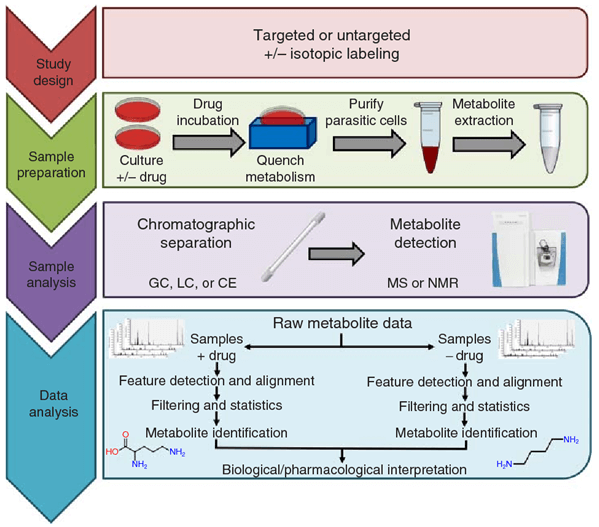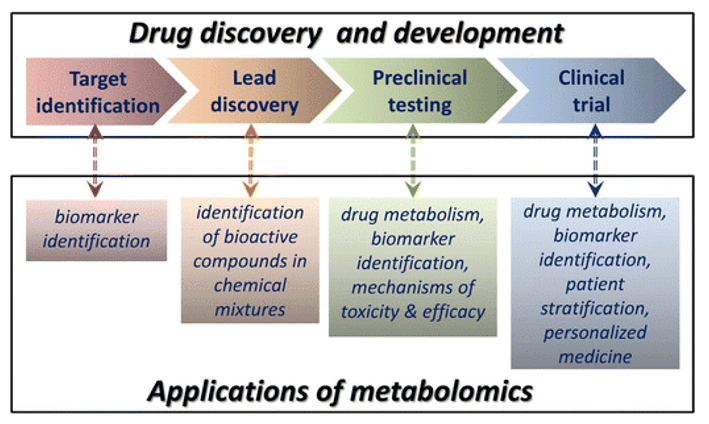Drug Mechanism of Action Analysis Services
Exploration of drug mechanism of action
- Analyze the metabolites of the drugs acting on the targeted cells
- Analyze the metabolites of drug action with targeted and non-targeted cells
- Analyze interactions between metabolites produced by drug action on different cell types
Metabolomics, as a systematic approach, can play a role in the study of drug mechanisms of action. Successful disease treatment must normalize the defective parts of the metabolic network without interfering with the regulation of other metabolic pathways necessary to maintain health. The study of drug mechanism of action is the study of the role of the drug in this regulation and how it works.
The use of metabolic fingerprinting can reveal drug-induced changes in endogenous metabolites that directly reflect changes in biochemical processes and states in the body. The complex multicellular system of the human body depends on the proper transmission of genetic information and neurological and humoral factors, and this information transmission depends to a considerable extent on various receptors. The analysis of the causes of changes in metabolic profiles can help to elucidate the targets or receptors of drug action. From the perspective of pharmacological analysis, new drugs can be discovered and eventually made to have better efficacy and less toxicity and side effects based on the relationship between the structure and effect of drug molecules based on the reaction pattern between drug molecules and receptor molecules.
Creative Proteomics provides metabolomics solutions for drug mechanism of action analysis, aiming to more comprehensively study the relevant metabolites before and after drug action, explore the drug target and the process of drug action, in order to reveal the drug mechanism of action.
Drug mechanism of action analysis technology platform
Metabolomics can provide a metabolic fingerprint of an organism and can be applied to the study of disease mechanisms. Based on the location of the altered peaks in the principal component (PC) map, the altered substances can be analyzed by bioinformatics to understand the mechanisms of disease development.
Metabolomics is very demanding in terms of analytical tools due to the very large amount of data to be analyzed. Currently, we commonly use analytical techniques such as nuclear magnetic resonance ((NMR) and mass spectrometry (MS).

- NMR: Analytical detection using hydrogen spectroscopy. A 1H NMR spectrum is obtained whenever the concentration is above the detection limit. The sample pre-treatment is simple, and the results can be obtained within 2~3 minutes without derivatization of the sample. However, the sensitivity and resolution of NMR are low, and it is only suitable for the detection of some metabolites with high abundance.
- MS: GC-MS, LC-MS, UPLC-MS detection techniques have the advantages of high efficiency, high throughput and high sensitivity.
Creative Proteomics will selectively use different analytical methods depending on the type and content of metabolites and your needs. We can also provide studies on drug interactions, the effects of drugs or toxicants on target organs, and for efficacy monitoring in clinical trials. If you would like to learn more, please contact us and we look forward to working with you.
Reference
- Giannangelo, C. R., Ellis, K. M., Sexton, A. E., Stoessel, D., & Creek, D. J. (2016). The role of metabolomics in antiparasitic drug discovery. Comprehensive analysis of parasite biology: from metabolism to drug discovery. Wiley-VCH Verlag GmbH & Co. KGaA, 321-341.
For Research Use Only. Not for use in diagnostic procedures.





